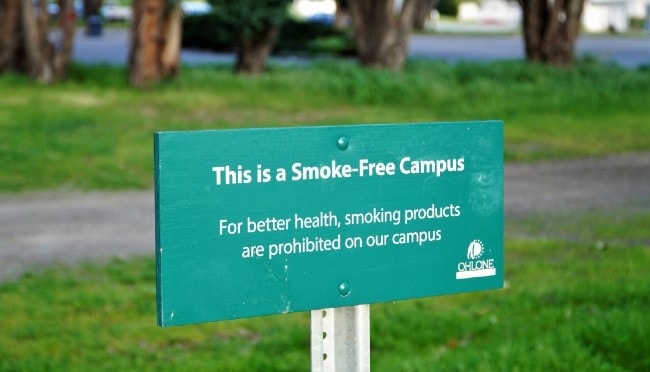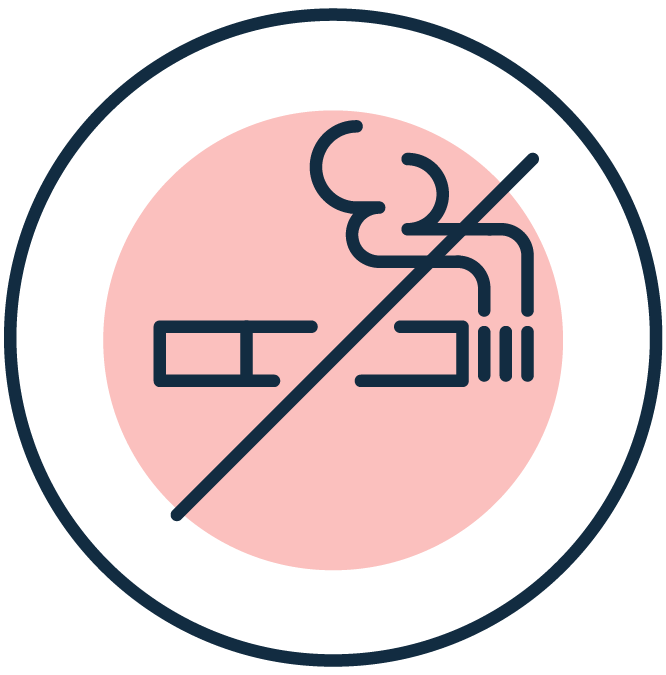Tobacco-Free Policy: NCCDPHP’s Program Successes

On This Page: Tobacco Control | New Orleans, Louisiana

Tobacco-free policies are population-based preventive measures to reduce tobacco use and tobacco-related illness and death. They can reduce the number of people who start to use tobacco, help people quit using tobacco, and protect people from exposure to tobacco products and secondhand smoke. That’s why they are one of the key social determinants of health.
CDC’s National Center for Chronic Disease Prevention and Health Promotion funds partners to improve tobacco-free policy as part of our work to achieve health equity. Following are examples of successful projects.
Tobacco Control Funding Addresses Disparities Among People With Mental Health Conditions
Tobacco-related health disparities are common, especially among people with behavioral health conditions. For example, in 2019, about 27.2% of adults with a mental health condition reported smoking cigarettes in the past month—compared to 15.8% of adults with no mental health condition. Furthermore, almost 40% of all cigarettes smoked by US adults are consumed by people with mental health conditions.
CDC’s National Tobacco Control Program works to reduce disparities, including among people with behavioral health conditions. A 5-year funding agreement that began in July 2020 supports policies to prevent young people from starting to smoke and reinforces tobacco-free norms among adolescents and young adults. Recipients also focus identifying and reducing disparities and evaluating the impact of tobacco control policies on reducing disparities.
This new funding agreement builds on a previous cooperative agreement in 2018. Under that agreement, South Carolina worked with state and local partners to form the South Carolina Leadership Academy for Tobacco-Free Recovery. The goal is to bring together representatives from public health, tobacco control, mental health, and addiction treatment to reduce tobacco use and exposure among people with behavioral health conditions. As a result of this work, all 16 participating mental health centers adopted comprehensive tobacco-free campus policies, and 9 of 32 local commissions to prevent drug and alcohol abuse adopted comprehensive tobacco-free campus policies (covering 19 sites).
Only about half of mental health facilities nationally report having smoke-free campuses. Policies like these can help people who smoke quit, and they are the only way to fully protect people who don’t smoke from secondhand smoke exposure.
Coalitions Combine Forces for Cleaner Air in New Orleans
Smoking causes many kinds of cancer, including most lung cancers. People who don’t smoke but are exposed to secondhand smoke at home or work have a 20% to 30% higher risk of getting lung cancer.
The Louisiana Comprehensive Cancer Control Program (LCCCP), Louisiana Tobacco Control Program, and Geographic Health Equity Alliance provided data on the health impact of smoking, exposure to secondhand smoke, related health disparities, and harmful health effects of smoking and secondhand smoke on New Orleans culture and livelihood. City Councilwoman LaToya Cantrell brought together a coalition of health and cultural organizations and proposed a comprehensive smoke-free law for indoor worksites and public places, including bars and casinos. The law was unanimously approved by the New Orleans City Council in April 2015.
This coalition’s work was supported by the CDC-funded LCCCP and Louisiana Tobacco Control Program, and CDC provided testimony to the New Orleans City Council on the value of going smoke-free.
This law protects over 300,000 New Orleanians and the millions who visit the city annually and is one of the first comprehensive smoke-free laws adopted in a Southern mid-size city to include e-cigarettes and casinos. This law has also served as an example for other Southern cities, such as Atlanta, and the overall movement to make casinos smoke-free across the country.
Smoke-free laws for all workplaces and public areas are the only way to fully protect people who don’t smoke from secondhand smoke exposure.